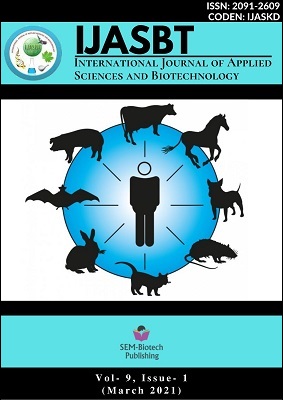Status and Diversity of Terrestrial plants in Ghodaghodi Lake Complex, Nepal
DOI:
https://doi.org/10.3126/ijasbt.v9i1.35084Keywords:
Biodiversity; Density; Fabaceae; Frequency; Terminalia tomentosa; QuadrantsAbstract
Among the Ramsar sites of Nepal, Ghodaghodi Lake Complex (GLC) is a biodiversity hot spot. This study was carried out to assess the status and diversity of terrestrial plants in GLC. Employing purposive sampling, altogether 38 plots were taken along the right hand side of the foot trails around the GLC. Collected data were analyzed using formulas and Important Value Index (IVI) was calculated. A total of 50 terrestrial species from 27 families were recorded, among which 35 were trees, 8 shrubs, and 7 herbs. Terminalia tomentosa (Saj) has highest IVI (46.53) among tree species. Similarly, Aerva lanata (Khari) has highest IVI (54.13) among herb species and Calotropis gigantea (Aank) has highest IVI (68.56) among the shrub species. The family Fabaceae family (n=7) represented the maximum numbers of plants species followed by Moraceae family.
Int. J. Appl. Sci. Biotechnol. Vol 9(1): 38-44




